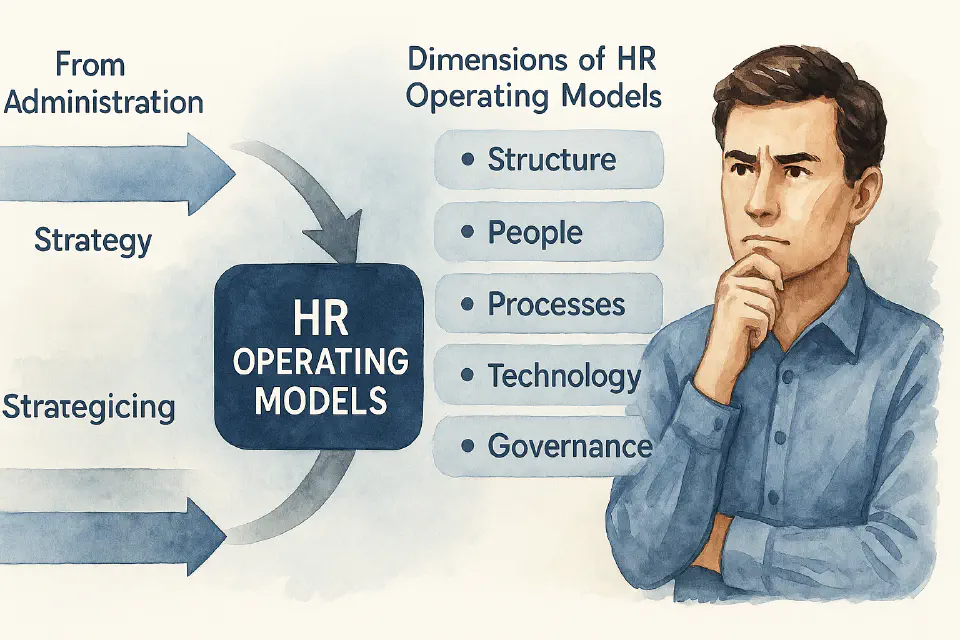
HR Operating Models: Overview & Evolution
An HR strategy is only as strong as its operating model. To drive real impact, HR must organize itself in a way that delivers consistent value and adapts to change.
An HR operating model is the structural and functional blueprint that defines how HR delivers its services, executes its strategy, and interacts with stakeholders across the organization. It covers not just structure, but roles, processes, governance, and enabling technologies.
From Administration to Strategy
Historically, HR was organized around administrative tasks—payroll, compliance, employee records. As the function matured, organizations began to realize the strategic potential of HR: driving engagement, shaping culture, developing leaders, and enabling transformation.
This realization brought new questions:
- How should HR teams be structured to deliver more strategic outcomes?
- What services should be centralized, embedded, or outsourced?
- How can HR become more agile and responsive?
The result has been a progression of operating models—from transactional support units to integrated business partners, centers of excellence, and even platform-based service ecosystems.
What Makes an Operating Model “Strategic”?
Not every model that “looks modern” is fit for purpose. A truly strategic operating model is:
- Aligned with business strategy
- Clear in role definitions and governance
- Designed for service quality and scalability
- Enabled by data and technology
- Flexible enough to adapt to change
It also creates coherence across HR functions: talent acquisition, learning, DEI, workforce planning, and more. A broken model leads to gaps, duplication, and frustrated stakeholders.
Dimensions of HR Operating Models
There’s no one-size-fits-all. But most HR operating models consider five interrelated dimensions:
- Structure – centralized, decentralized, or hybrid?
- People – what roles exist, and how are they defined?
- Processes – what’s standardized vs. customized?
- Technology – what platforms support service delivery?
- Governance – how are decisions made and monitored?
Signs Your Model Isn’t Working
Even a well-designed model can struggle in execution. Common symptoms include:
- HRBP roles overloaded with tactical work
- Fragmented ownership of programs (e.g. DEI, performance)
- Unclear escalation paths for employee issues
- Lack of visibility into workforce data
- Inability to scale services across geographies
Why the Model Matters
Your operating model shapes everything: employee experience, HR effectiveness, and ultimately business impact. It influences how quickly HR can respond to requests, whether leaders trust the function, and how well HR can deliver on priorities like retention, growth, or transformation.
The Road Ahead
The rest of this section dives into specific operating model types and components, including the Ulrich model, agile teams, embedded vs centralized approaches, and platform-based thinking. Each has its strengths, weaknesses, and trade-offs—and understanding them is key to building an HR organization that’s built to last.